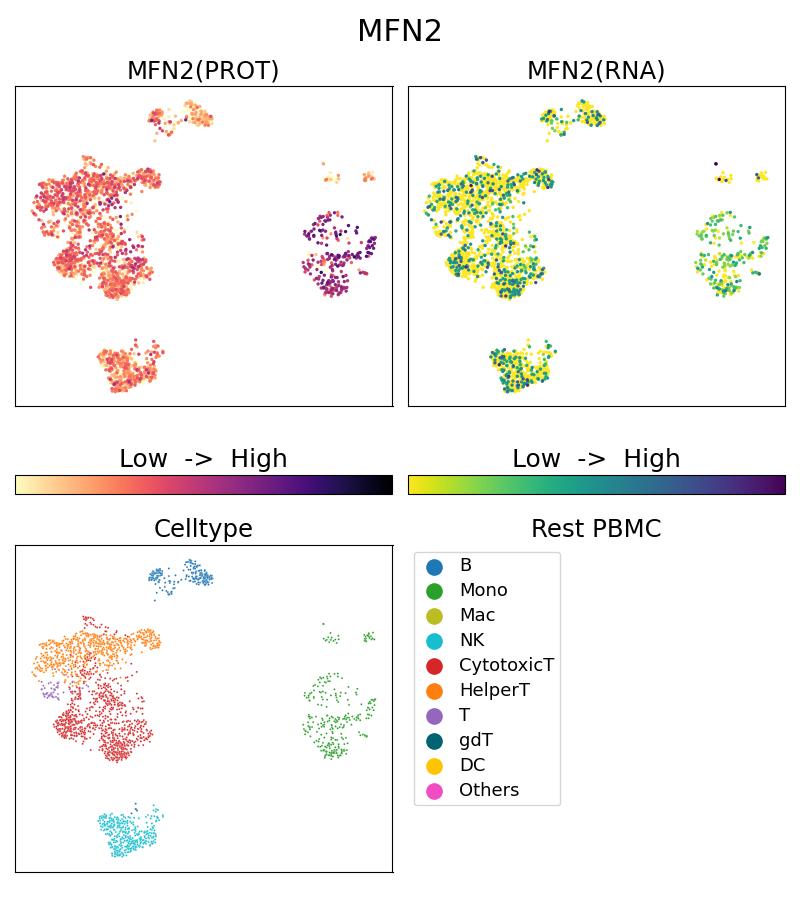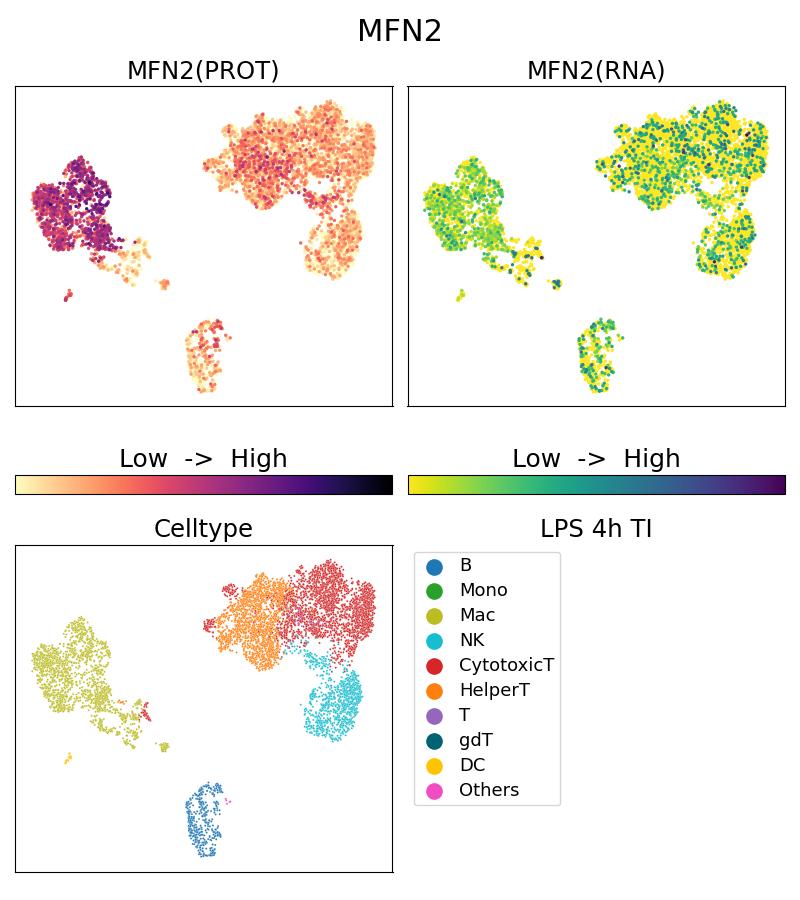MFN2 Monoklonaler Antikörper
MFN2 Monoklonal Antikörper für Single Cell (Intra)
Wirt / Isotyp
Maus / IgG2a
Getestete Reaktivität
human
Anwendung
Single Cell (Intra)
Konjugation
5CFLX Fluorescent Dye
CloneNo.
5F3B3
Kat-Nr. : G67487-1-5C
Synonyme
Geprüfte Anwendungen
| Erfolgreiche Detektion in Single Cell (Intra) | 10x Genomics Gene Expression Flex with Feature Barcodes and Multiplexing product |
Empfohlene Verdünnung
| Anwendung | Verdünnung |
|---|---|
| SINGLE CELL (INTRA) | SINGLE CELL (INTRA) : <0.5ug/test |
| It is recommended that this reagent should be titrated in each testing system to obtain optimal results. | |
| Sample-dependent, check data in validation data gallery | |
Produktinformation
G67487-1-5C bindet in Single Cell (Intra) MFN2 und zeigt Reaktivität mit human
| Getestete Reaktivität | human |
| Wirt / Isotyp | Maus / IgG2a |
| Klonalität | Monoklonal |
| Typ | Antikörper |
| Immunogen | MFN2 fusion protein Ag29873 |
| Vollständiger Name | mitofusin 2 |
| Berechnetes Molekulargewicht | 757 aa, 86 kDa |
| GenBank-Zugangsnummer | BC017061 |
| Gene symbol | MFN2 |
| Gene ID (NCBI) | 9927 |
| Konjugation | 5CFLX Fluorescent Dye |
| Form | Liquid |
| Reinigungsmethode | |
| Lagerungspuffer | PBS with 1mM EDTA and 0.09% sodium azide |
| Lagerungsbedingungen | 2-8°C Stable for one year after shipment. 20ul Größen enthalten 0,1% BSA. |
Hintergrundinformationen
MFN2, also named as CPRP1 and KIAA0214, belongs to the mitofusin family. It is an Essential transmembrane GTPase, which mediates mitochondrial fusion. MFN2 acts independently of the cytoskeleton. It therefore plays a central role in mitochondrial metabolism and may be associated with obesity and/or apoptosis processes. Overexpression of MFN2 induces the formation of mitochondrial networks. It plays an important role in the regulation of vascular smooth muscle cell proliferation. Defects in MFN2 are the cause of Charcot-Marie-Tooth disease type 2A2 (CMT2A2). Defects in MFN2 are the cause of Charcot-Marie-Tooth disease type 6 (CMT6). Ubiquitinated forms of Mfn2 (mono- and polyubiquitinated) are present during mitophagy.



